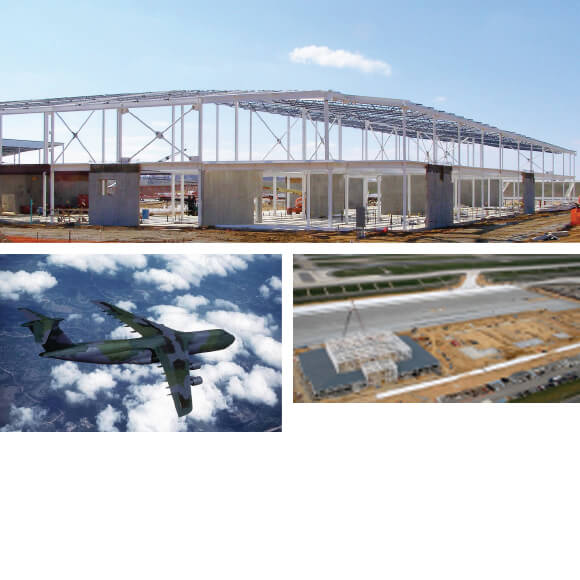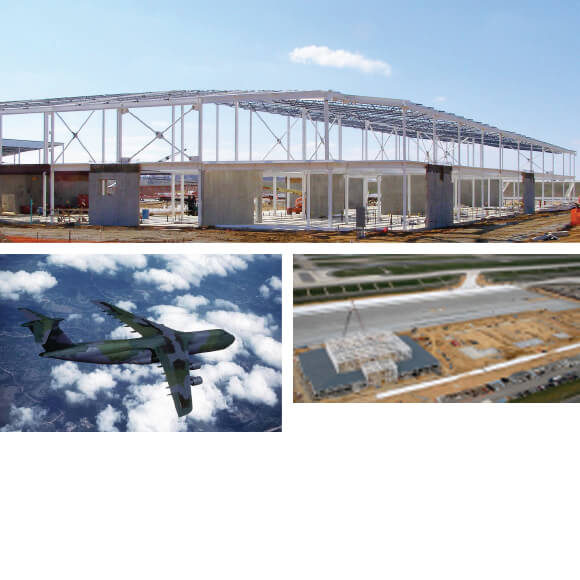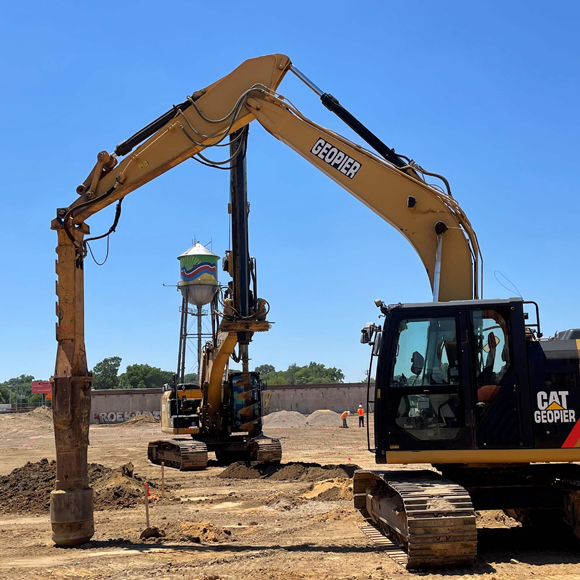
C-17 Galaxy Hangars 164th Airlift Wing Relocations
The Geopier® Rammed Aggregate Pier® (RAP) System was chosen to support the high compression and uplift forces of the new C-17 Galaxy hangars, instead of the more costly and time-consuming auger-cast piles
- Owner: Tennessee Air National Guard
- General Contractor: Alberici Construction
- Geotechnical Engineer: Professional Service Industries, Inc.
- Structural Engineer: Frankfurt, Short, Bruza
The 164 Airlift Wing of the Tennessee Air National Guard needed to construct three 10-story hangars to accommodate the C-17 Galaxy, the largest aircraft in the U.S. Air Force Fleet. Calculated compression and uplift forces acting on the tall, open structures are on the order of 900 kips and 240 kips per column, respectively.
The subsurface conditions at the site consist of an upper stratum of firm to stiff silty clay and clayey silt. The second stratum consists of medium dense to dense fine silty or clayey sand. Groundwater was encountered at the clay and sand interface, at depths ranging from 7 to 12 feet.
Geopier Rammed Aggregate Pier® elements were chosen to support the high compression and uplift forces of the new C-17 Galaxy hangars, instead of the more costly and time-consuming auger-cast piles. More than 1,000 Geopier elements were installed at the site, with more than 300 piers requiring uplift anchors.


